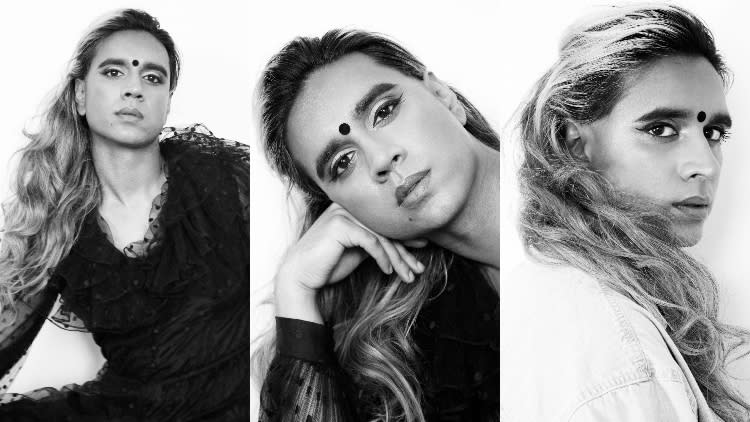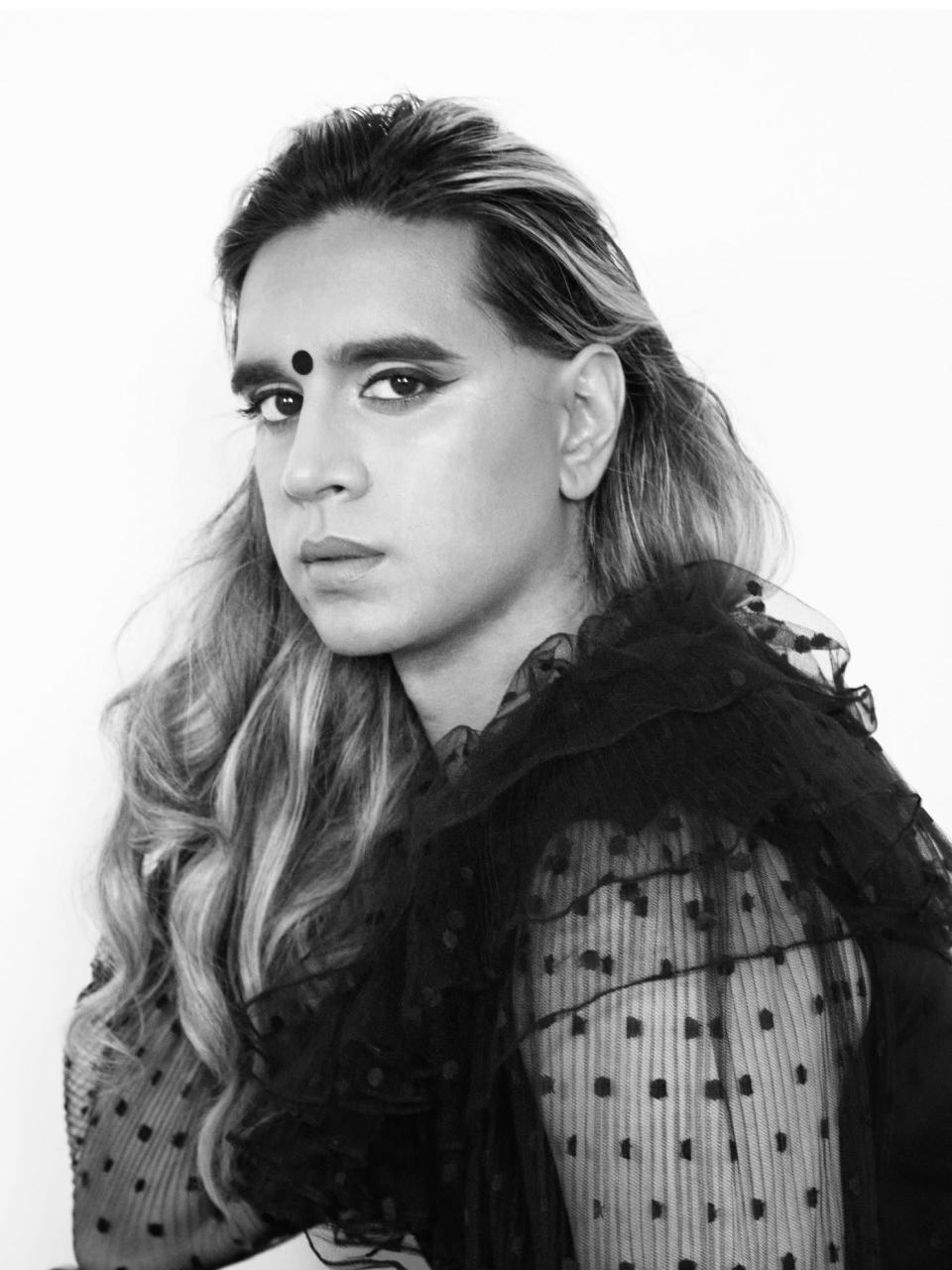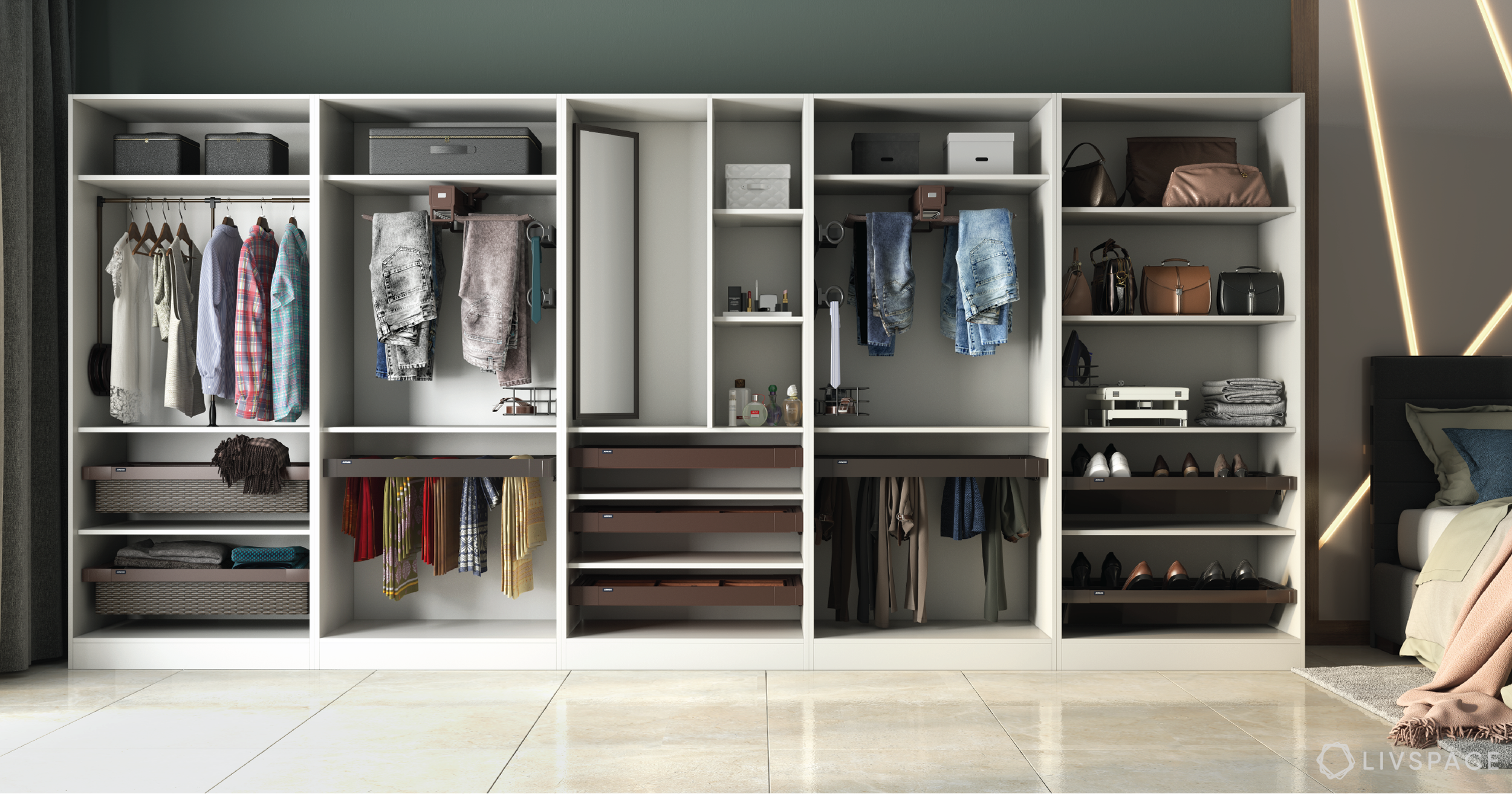[ad_1]

While Pride Month is a great time of year to look back on how far the LGBTQ+ community has come and to celebrate all of the achievements of queer and trans pioneers of generations past, there is still a lot of important work that needs to be done when it comes to equality and representation — work that extends beyond just one month out of the year.
Popular and beloved retailer Nordstrom understands this importance and is working throughout the entire year — not just Pride Month — to both highlight LGBTQ-owned/-founded brands and to carry products that benefit and give back to queer folks!
Considering that the LGBTQ+ community has our own set of specific needs, carrying products that are made by and for us is major, and community members, like musician, writer, professor, and visual artist Vivek Shraya, who shops for products at Nordstrom to help her express herself and her identity.
Out got the chance to catch up with Shraya to talk about her fashion and beauty inspo, the longtime commitment from Nordstrom to the LGBTQ+ community, feeling seen, and so much more! And to learn more, visit Nordstrom.com/Diversity!

Photo Credit: Ariane Laezza
Out: Could you describe your relationship with fashion and beauty and how big of a part it plays in your overall artistry and self-image?
Vivek Shraya: I really see fashion as just another form of creativity and another form of creative expression. I see it as an extension of the work that I’m doing. I don’t see it as separate. It’s not like here’s fashion and here’s art. To me, those worlds go hand-in-hand, and often I use fashion to further the intention of whatever project I’m working on or putting out into the world. For instance, I just put out a book called People Change earlier this year and the aesthetics that we chose are very much tied to wanting to further the message in the book. So yeah, those things, to me, go hand-in-hand.
In your own words, how would you describe your style/aesthetic?
My makeup artist often jokes that I’m a “more is more” person, which is funny because I see myself as a minimalist. So, I think that I tend to be drawn to color a lot. I think coming from an Indian background, it really is about excess and color and accessories. But yeah, I’m trying to summarize how else I would describe my style. I mean, I think I’m a cross between Sporty Spice and Posh Spice.
I love that. And according to the TikTok girlies and the young kids, maximalism is in.
That’s good to know. Yeah, it’s just funny because I’m always like, ‘Oh I’m such a minimalist,’ and my makeup artist is like, ‘No you’re not. I don’t think you know what minimalism is.’ So, yeah.
How long have you been cultivating your own unique sense of style and beauty?
I think that one of the strange byproducts of homophobia, which for me, I would say started probably before I even recognized it. But when I sort of name it or when I say that it became most evident to me was grade seven. One of the strange byproducts of overt homophobia is when someone tells you there’s something wrong with who you are and how you appear. I think one of the beautiful things that queer people do is we often subvert that kind of attention and hatred or reclaim that kind of hatred and attention by using fashion as a way almost to stand out further. It’s a strange thing, it’s like I’ve done both in my twenties, I was very much about like hiding who I was. But I think my first reaction to homophobia was to actually push myself out even more and to refine my sense of individuality in a way that was even more different.
To answer your question, I feel like I’ve been cultivating my sense of style since around the same time since grade seven, since age 12. I think part of it is that it’s also like a weird backfiring because I don’t know what I was thinking. What I was trying to do was fit in and yet, because I have a queer sensibility, my ideas of fitting in have always been outside the box. When the kids were wearing their Club Monaco sweatshirts inside out, I was like, ‘Oh great, I’ll wear my Club Monaco sweatshirt inside out and my sweatpants inside out,’ which was too much. (Here we go, more is more.) But I think any of my attempts to fit in were always overboard in a way because I always wanted to put my own slant on it. I always wanted to put my own touch on it. And I think that’s the thing that feels to me is that refusal to be like everyone else, to do things like everyone else. Even when I was trying to conform, I was still pushing beyond that. And I think that, yeah, I would really say that’s a queer sensibility.
Who or what are your beauty and fashion inspirations?
Growing up, certainly, my mom was my number one and first beauty inspiration. I really always thought she would look like a Bollywood actress and I just found her so beautiful and definitely was inspired by her aesthetic. Even now when I look at photos of her in her twenties and thirties, she always color matched her bindi to her outfit. And I do that too and I’m pretty sure that I got that from her. Now I think, obviously, contemporary references. And then I think in my teens, I would say Madonna was probably like a really huge one for me. I know that she’s not cool with the kids anymore, but for me, in the ’90s, Madonna was a really, really huge influence on me.
Brad Pitt was also a really huge influence on me. Aesthetically, there was something about the fact that he was constantly evolving his style, which I didn’t feel like we saw with a lot of male actors in Hollywood. In the ’90s, he went from long hair to short hair and was constantly just changing his look, which I think was really the constant evolution of his style was really interesting to me. Now obviously as an adult, Beyoncé, Rihanna, those are huge, huge influences for all of us. Certainly, for me.
Julia Roberts has been a hair reference recently. I don’t know why it’s a lot of ’90s. I mean, for me the ’90s are just…it’s such a nostalgic time for me because I grew up during that time, but the ’90s are also still in in a particular way. I know we’re slowly moving to the 2000’s, but I’m still sort of have my head in the ’90s. I often reference the ’90s, so like Julia Roberts is somebody recently, or ’90s supermodels, like that whole vibe. The supermodel era, those are often images that I’ll have on my mood boards for projects.
Nordstrom is committed to supporting and giving back to the LGBTQ+ community by highlighting LGBTQ-owned and founded brands, as well as products that give back to the community. They carry so many products that give back and support the queer community, like Be Proud by BP, The Phluid Project, Vans, and Coach, just to name a few. And some of their partners include the Hetrick Martin Institute, Trans Lifeline, HRC, and the Ali Forney Center. And they’re not just doing this for Pride Month, but throughout the rest of 2022 as well. As a member of the community, how does it feel to know a company like Nordstrom is supporting us in this way?
That’s always really great to hear. I think it’s important for us to be recognized as not just a general consumer market, but the fact that we have very specific consumer needs. And it’s good to hear that Nordstrom is committed to supporting us in that arena. For me, one of the things that has really stood out about Nordstrom is actually around shoes and shoe size. As a trans girl, I don’t have cis feet sizes. So, being able to go on the Nordstrom site and quickly and accessibly search for a shoe size that fits me and have a lot of options actually, because a lot of shoes tend to stop at a particular size instead of nine shoes in my size in a department store, that to me feels like a sort of understanding and not just in my shoe size, but actually larger shoe sizes than nine, which is also like really good to see.
Nordstrom understanding that we have specific needs that aren’t just the average consumer or the average straight cis consumer, I think to me that’s what feels really heartening.
What are some of your favorite Nordstrom-carried brands that have helped you to express yourself fashion and beauty-wise and to turn out some cute looks?
I think the biggest one for me is actually MAC products. I’m a huge lover of MAC and MAC makeup and Nordstrom had some exclusive products that I haven’t been able to find at a general MAC store. So, that’s wonderful. The other products that I go to Nordstrom for include other brands like Clinique. I’ve been doing the three-step program with Clinique since I was in my mid-twenties, so, I often find they have a good selection of Clinique products as well.

Photo Credit: Ariane Laezza
Nordstrom is also committing itself to diversity by highlighting not only LGBTQ+ brands, but brands from people of color, which is important, especially in the beauty and fashion space because it helps people feel seen and that they belong. Do you remember the first time you felt seen in those spaces, or the first time you ever felt like you saw yourself in media? How did it make you feel?
I think the first time I really felt like I saw myself represented in media, in a particular way, was in a movie called The Namesake with Kal Penn, who at the time didn’t openly identify as queer. It was one of the first times that I was able to share a narrative about a first-generation immigrant family with my mom as well, watching something like that on the big screen about what it means to raise a Brown child in North America and having immigrant parents. I think another big one for me was the “Bad Girls” video by M.I.A. She’s like pulling from like Arabic culture, Muslim culture in that video, which obviously isn’t my culture, so to speak. But I think just seeing someone being badass and Brown in a music video in a particular way, which itself felt very inspiring that video, just the style and the aesthetic in it, the way that she combined sort of the traditional elements with sort of contemporary elements of style and fashion, like that was just it for me, it just was very exciting.
I think also me being invited into those spaces as a model. I’ve been doing some brand work for MAC and Pantene, and so, as a trans person of color being asked to do that kind of work and especially model in ads and campaigns feels really exciting. And also hard to imagine. It has felt really unexpected to be brought into those spaces, especially not even just as a trans girl, but also as someone in my forties. I think the fashion and beauty industry tends to be so youth-centric, and as someone who’s clearly not a youth, it feels really moving and unexpected to be brought into those spaces.
What’s some advice you can give to others who are trying to figure out what their personal style is? How they should go about finding it and figuring out what works for them or what they like?
I think it’s really about experimentation and I think the willingness to be not cool, the willingness to be not fashionable. Basically the willingness to make fashion faux pas. I think about some of the choices that I used to make as a teenager. I once cut out an onion bag and decided it was a hat. I once threaded a winter scarf through my belt loops. I made a lot of bad fashion choices, but I actually celebrate them because I think and in some ways, I miss that energy because I love that willingness to try because I think so often with fashion, it is about trying and experimenting and play. Sometimes in the search for coolness, we forget that actually, it should feel fun, it should feel joyful. If something makes you feel good, rock it and have fun with it. Your friends might laugh at you the way my friends laughed at me. But at the end of the day, I don’t think good style comes from not experimenting, not playing, not trying. Does that make sense?
Yeah. I feel like some trends, they start out as experiments and fun, silly things. But then they become bigger things and then it becomes, ‘Oh, that actually looks good.’ So you got to try.
Yeah! The bucket hat is a great example. The bucket hat to me is the silliest accessory and yet, the bucket hat has made such a huge comeback. I see it on people all the time. I don’t think you’ll ever see me in a bucket hat, but I can appreciate it for what it is now in a way that when I used to see photos from like the ’80s and ’90s with bucket hats, I was like, ‘Burn it down.’
I think part of it’s also that there’s this idea that you have to be confident in your style. Just be confident, just rock it, but it’s also okay not to be confident. I think that we live in a world where we, as queer people, are under a certain kind of scrutiny and experience all kinds of harassment and hatred. So, I think that sometimes confidence isn’t something that you can just access. So I’m all for faking it. I think faking it is a good thing. If you can’t tap into that confidence, shake it.
I think the other thing that’s been really useful for me in terms of fashion has just been diversifying my feed through social media, being able to just follow other trans people I admire, follow other queer people I admire. That does help me build a kind of confidence, by looking at how other people are pushing themselves out in the world and presenting themselves in the world. Those are some of the things that come to mind.

Photo Credit: Ariane Laezza
RELATED | 25 Pride Collections That Actually Benefit the LGBTQ+ Community
[ad_2]
Source link



